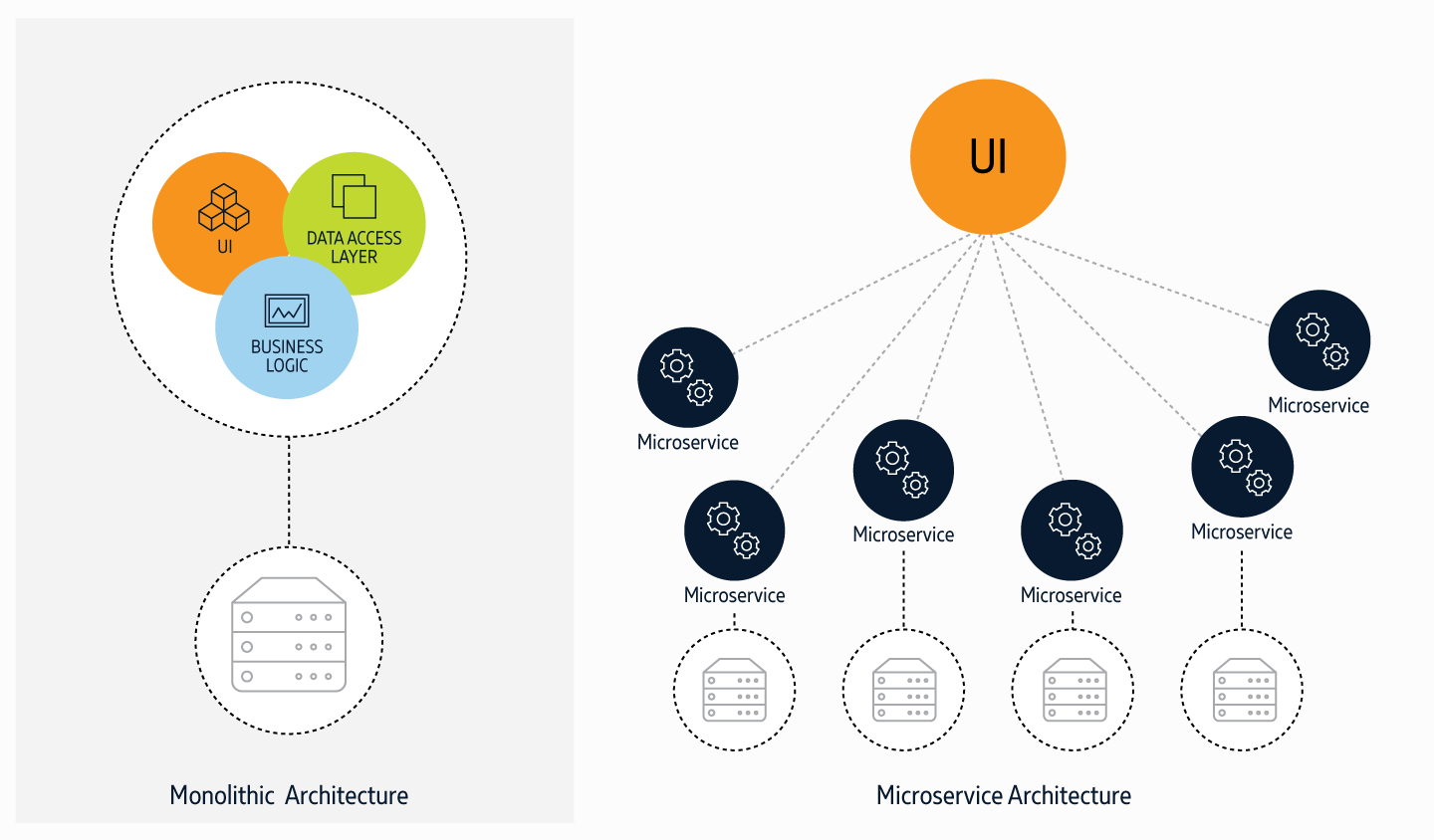What are Microservices?
October 7, 2019 | By Jay Mozo

The term “microservices” or “microservice architecture” has been a buzzword among software developers for the past few years. But why should we care or even be talking about it?
Simply put, the traditional method for constructing enterprise applications has become problematic as applications become bigger and more convoluted. As a result, developers are now using a microservice architecture, which is broken down into small micro applications that are packaged and deployed independently—making them easier to build, expand and scale as needed.
Let’s discuss the differences between monolithic versus microservices.
A monolithic approach
Think of a monolithic architecture as one big container where all software components of an application are assembled and tightly packaged together. Monoliths tend to be legacy environments—very rigid and not flexible. For example, an e-commerce application that requires a user interface for customers and back-end services for authorizing payments, checking product inventories, shipping orders and much more.
Despite having numerous components, the individual monolith would be built as one application serving all platforms. But what happens if there is a bug in one of the modules? For every edit or update, you must redeploy the entire application.
Here are common challenges with monolithic architecture:
- Inflexible – one technology must be used to build monolithic applications
- Unreliable – if one component doesn’t work, the entire application is ineffective
- Hard to scale – applications don’t have the capability to be scaled easily because every update or edit must be redeployed
- Difficult to maintain – if the application becomes too large or complex, it’s challenging to make simple changes quickly
- Slow development – each component requires a lot of time since they require being built one after the other and can’t be deployed at the same time

A microservices approach
As new innovations and best practices arise, architectures need to be able to bend and not break. So, how do you enable flexibility and agility? The answer is: microservices. Microservices architectural style structures an application into smaller independent services and communicates with each other via application programming interfaces (APIs). Each of the components are structured to support one business goal—and do the job well.
With monolithic applications you make one small change, you have to test it and make sure the entire app hasn’t malfunctioned. With microservices, a developer can identify which feature needs to be changed, fixed or updated—then test just that one feature. The independence of each loosely coupled module allows developers to simply add or improve functionality. Listed below are some benefits of a microservices architecture approach:
- Easy to test – since all the modules are smaller, it’s easier and faster to test
- Greater deployability – components can be deployed independently on their own
- Continuous delivery – no matter how complex or large an application gets, a module can still be deployed
- Agility – any new feature or adjustment can be quickly developed and deployed
- Autonomy – each module is independent from one another and can be upgraded or adjusted as needed
- Improved fault isolation – one buggy component will not affect any other component
To find out more about microservices, read Version Next, Now: Monolith to Microservices.
Jay Mozo is TEKsystems’ chief principal practice architect for cloud enablement. With over 20 years of experience in the tech industry, Jay has spent most of his career mastering cloud and DevOps. You can read more of his perspective in Version Next, Now: Monolith to Microservices.
Version Next, Now: From Monolith to Microservice
Improving the value stream by transitioning from monolith to microservice architecture